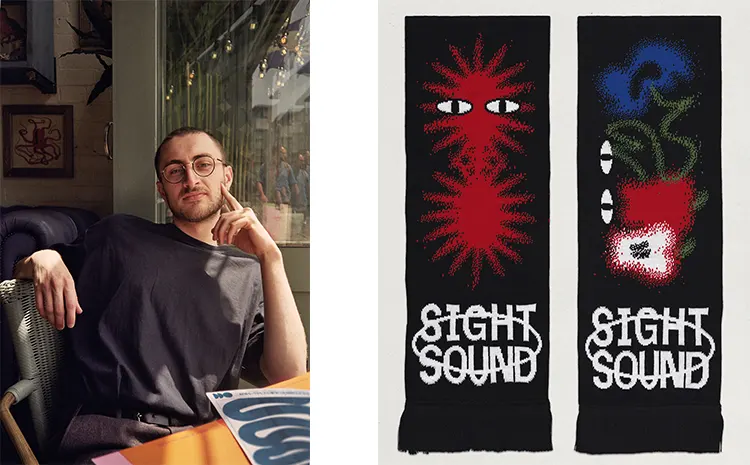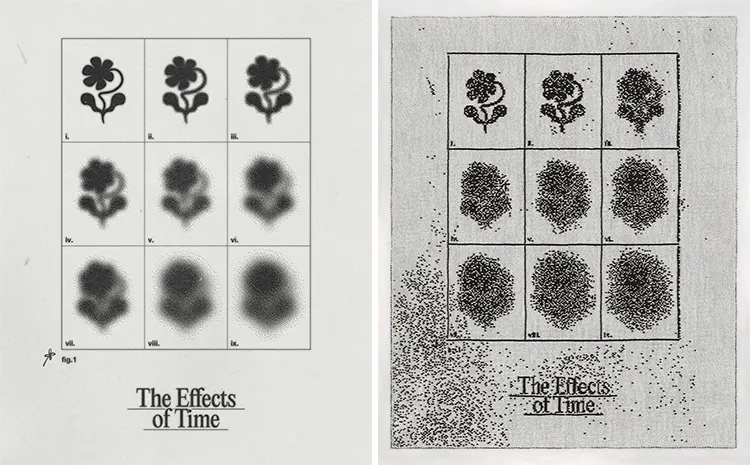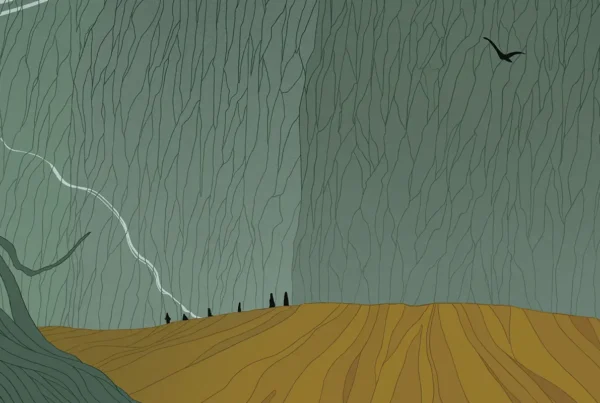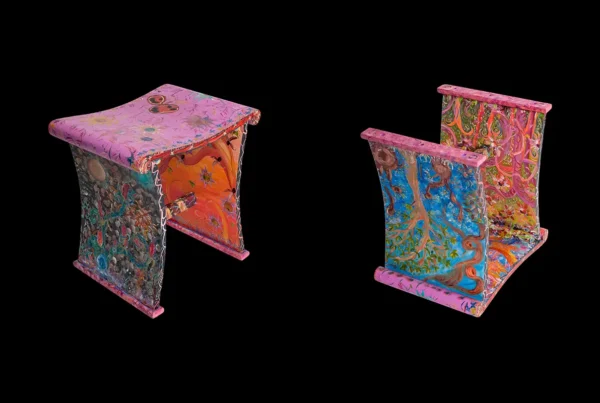“It was the definition of a “happy accident”, really strengthening the piece in my eyes.”
From Architect to Artist: The Unshakeable Influence of Architecture on Khabbazi’s Art
Alex Khabbazi, a UK-based artist and designer, is renowned for his unique artistic style which draws on his rich background in architecture. Khabbazi’s journey into the creative world began with a focus on architecture, where he gained extensive experience designing bespoke homes tailored to the specific needs of his clients. Despite transitioning into a more two-dimensional medium, Khabbazi’s architectural roots continue to leave an indelible mark on his artistic creations.
Khabbazi’s decision to leave behind his well-established career in architecture and delve into the world of art was driven by a desire for greater creative freedom. Although he has moved away from the field of architecture, the influence of his architectural training remains deeply ingrained in his artwork. Much like the intricate and multi-faceted nature of architectural design, Khabbazi’s art is characterized by its consideration of every detail as part of a larger cohesive whole. Each element within a piece contributes to the overall vision, revealing the artist’s meticulous attention to detail and harmonious composition.

Artistic Techniques: The Digital-Analog Fusion in Khabbazi’s Creations
In terms of technique, Khabbazi’s creative process is an intriguing fusion of the digital and analogue worlds. He frequently blends digital designs with tangible textures, layering and manipulating various elements to achieve a unique and cohesive final artwork. This innovative approach often involves the use of printing techniques and distortion effects, adding an additional layer of complexity and depth to his creations.
In recent times, the art of Alex Khabbazi has been markedly characterized by themes drawn from the natural world, ranging from sinuous serpents to otherworldly plant life. Notably, the impact of Khabbazi’s architectural training remains palpable in each of his works. Beneath the surface of each piece lies an unobservable yet meticulously planned structure, acting as the bedrock upon which his artistic creations rest.

Influences and Impact: Khabbazi’s Artistic Connections and the Story Behind “Endless Hissing”
Khabbazi’s fascination with several Japanese graphic designers of the 20th century is readily apparent within his oeuvre. This influence is especially conspicuous in his Sight + Sound series, as well as individual pieces such as Endless Hissing. Among the artists who have left an indelible mark on Khabbazi’s work is Kazumasa Nagai, whose character-based designs have informed Khabbazi’s approach to character representation. Similarly, Yusaku Kamekura’s iconic poster designs have left their imprint on Khabbazi’s own work, with certain pieces echoing Kamekura’s unique approach to layout structuring. Another figure of significance in shaping Khabbazi’s artistic sensibilities is Kazumasa Nagi, who is renowned for his striking illustrations executed in bold primary colors throughout the 1980s and 1990s.
Alex Khabbazi’s artwork “Endless Hissing” holds a special significance for the artist. This piece emerged as part of a series that explored the typology of hazard signs and symbols, transforming these into a collection of enigmatic yet readily identifiable prints. Intriguingly, upon completion of the work, Khabbazi recognized it as a subconscious tribute to an earlier, untitled piece that had been created nearly a decade prior. This connection seemed especially apt given the importance of subconscious recognition in the efficacy of hazard signage. The serendipitous interplay between Khabbazi’s past and present work not only enriched the artist’s personal connection to “Endless Hissing” but also reinforced the strength and impact of the piece.

Artistic Process and Evolution: Khabbazi’s Creative Exploration and Materiality
Alex Khabbazi’s artistic process can be characterized as a fluid interchange between multiple mediums, employing innovative techniques to introduce analogue textures and authentic distortions into his work. He achieves this by incorporating a range of strategies, including printing out digital artworks and rescanning them, as well as integrating his pieces into machine-knitted textile tapestries. His critically acclaimed series, “Effects of Time,” exemplifies this multi-layered approach. Beginning as a digital drawing, the artwork is then printed onto paper, distressed to introduce organic imperfections, rescanned to capture the resulting analogue nuances, and finally machine-knitted from the scan, manifesting the distortions in stitchwork.
Khabbazi’s creative energy perpetually drives him to embark on new projects, seldom pausing between endeavors. His versatility as an artist enables him to seamlessly transition from one undertaking to the next. Currently, Khabbazi is deeply invested in the exploration of materiality in his artwork. He aims to further infuse his pieces with tangible elements, enhancing the sensory impact on his audience. His successful past experimentation with machine knitting has fueled his intent to continue incorporating tactile elements into his work through this medium.






